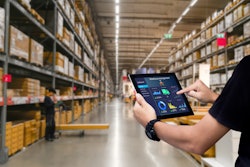
Over the past two years, the world witnessed the quick digital transformation of today's retailers to the online marketplace. As more consumers set their focus on making online purchases, the new face of retail is holding firm. The first half of 2020 saw an increase in online shopping of 77% year over year, totaling $82.5 billion. As as brick-and-mortar stores increase their footprint and investment in e-commerce, the task of processing returns is now central to the shopping experience.
With some online retailers seeing return rates as high as 30%, a significant portion of a company's operations must be devoted to processing returns. It is now vital for retailers in the e-commerce space to invest in a returns management system (RMS) solution that can remove heavyweight, time-consuming returns off the company's shoulders and simplify the process to become a streamlined part of their daily business. Some might not think having a streamlined RMS solution is critical to a business's survival, but consider that 92% of online shoppers said they would make another purchase from a retailer if they experienced a previous returns process that was simple and quick.
Returns are costly to companies as they have to review the returned product, refurbish it and get it back in stock. Returns are also a highly fraudulent endeavor. The all-to-common reality is that some buyers make bulk purchases of one or more items only to keep the original item and get their refund while reselling the original item to make a profit. This is one of the threats retailers protect themselves from when they incorporate an RMS platform to track the fraud and keep revenue-generating upward.
An end-to-end returns management solution helps to support – B2B, B2C, e-commerce, manufacturers and third-party logistics providers (3PLs) – increase their profit margins, streamline returns processing, accelerate credit speed and reduce revenue loss.
What methods should an RMS solution combine to handle the logistics of a company's returns? The platform breaks returns management logistics into three areas – returns initiation, returns processing and tracking/recovery.
1. Returns initiation. The main goal of the "post-purchase" experience is to ensure the process of returning a product is as simple for the consumer as it was to buy the item. Additionally, a retailer is given the visibility needed to determine why a product was returned the moment the return is requested. Visibility is critically important for the business to receive valuable insight that helps with decision-making on restocking and limits fraudulent returns activity. The visibility also enables the customer to get updates on their return's status and reduces their time calling customer service agents, which helps the brand promote a positive customer experience.
2. Returns processing. This next step in the returns stage focuses on leveraging data to determine if the cost of shipping the returned product back to the company's warehouse is more expensive than the product itself. This is particularly important for e-commerce retailers operating on a global level. Depending on this determination, the retailer may instruct the customer to keep the original item while shipping them a new one. Alternatively, if the customer returns the defective product, the RMS solution will determine which warehouse location is the most suited to replace it. This determination is typically based on proximity and inventory fulfillment needs. Suppose repairs are needed on the item before being put back in inventory to be resold. In that case, the RMS platform will manage the item's inspection and product grading process by enlisting the help of the necessary departments or employees to handle the repairs while the solution tracks the progress.
3. Tracking and recovery. This is the final phase of the returns process that heavily affects shipping and warehouse team members. With the ultimate goal of getting the returned product quickly placed back in inventory for resale, the RMS solution must first determine which warehouse to have it sent to before final disposition. Next, the platform will deploy recovery efforts to reduce inventory waste and profit loss. The platform will execute this final stage of the returns process by integrating itself into the retailer's existing technology systems.
Today's retailers must be equipped with a critically important RMS solution to thrive and find success in an ever-changing digital era. Online businesses can reduce product loss and increase revenue and positive customer service efforts by leaning into the required digital transformation that today's multi-faceted consumer calls for. Gone are the days of having to spend hours or days processing returns and going back and forth with customers. The time has come to adopt a digital system that will manage this process so supply chain leaders can get back to providing outstanding service and quality products while increasing brand viability and protecting the ever-important bottom line.




















![Pros To Know 2026 [color]](https://img.sdcexec.com/mindful/acbm/workspaces/default/uploads/2025/08/prostoknow-2026-color.mduFvhpgMk.png?ar=16%3A9&auto=format%2Ccompress&bg=fff&fill-color=fff&fit=fill&h=135&q=70&w=240)